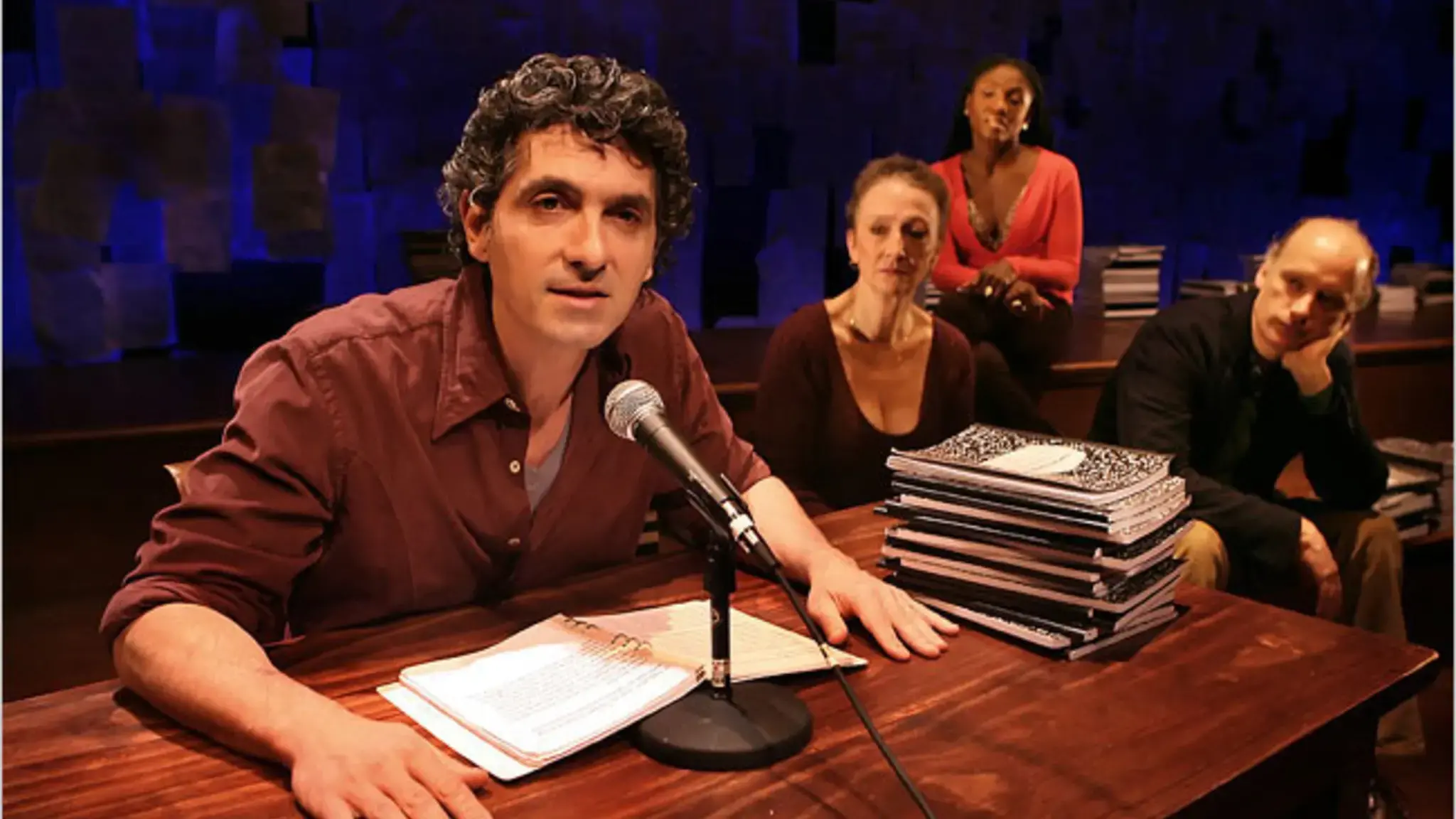

In the third and final segment of our three-part conversation between Center Visiting Artist Ain Gordon and Center Executive Director Paula Marincola, Gordon gives us a glimpse of his role as collaborator, entering ongoing conversations at the Center and proposing alternative possibilities for our approach to our work. Thanks to an active role in several ongoing Center programs, he has offered his unique point of view to the benefit of Center staff and constituents. “Certainly [the Center] can’t do everything for everyone,” he says, speaking to a grantmaker’s impact. “Certainly we have a strategic agenda. But that doesn’t preclude us from being open to conversation.”
Paula Marincola: You have a very valuable ability to think across disciplines in that way, to understand the larger concepts that are under-girding a specific conversation around a specific discipline, and to then export that across the conversation. And that is something that is also my task as executive director. You have been a great thinking partner for me in regards to my own work.
Ain Gordon: I’m a text-based artist; I’m a writer. So people and words are what matter to me and what I attach to. I have some skill at both seeing and hearing the staff here and knowing the intentions underneath words that are not sometimes the best words to use with an artist—and, likewise, an artist choosing words that may not “speak” to the staff.
PM: You were really helpful to the Pew Fellowships program director, in thinking through the Center’s relationship with the Pew Fellows.
AG: We had a whole conversation about what happens to you as an artist when you are taken up by someone—when you get a champion, a venue, a commission, a grant. However, you know that you will be re-dropped into the chaos of your regular pool at the end of that engagement or grant, etc. We talked about what the relationship could look like if there were multiple other outcomes beyond being given an infusion of money. The notion that you were in a multi-tiered support structure for a longer period of time—that you had that constancy wrapping around your peripatetic working life—and what that does to your work. That level of engagement.
PM: I think your notion of an extended engagement over time with the artists that was separate from the money has been extremely helpful. And I think the response from the Pew Fellows has also been really strong. They like it. So it may seem like a minor thing, separating the grant from all of our other interactions with them, but it has a larger impact. And it comes out of your being able to drop into the office of the Pew Fellowships director and her saying to you, “What do you think about this? We’ve done things this way for a long time. Is there a better way to do it?”
AG: There was no appointment; it was just being around. You walk around the floor a lot and people say, “Oh—”
PM: “Oh, come in.”
AG: Just the other day, that same director told me that one of our Pew Fellows made a request of her that she did not think she could at all do. And I said, “But the great thing is the artist thought they could make that request with you. You have done your job. The artist thinks they can make any request. You get to say no; that’s fine. But they think you might say yes. It’s amazing.” Isn’t that part of trust and confidence as well? And that’s an important thing. Certainly we can’t fund everybody. Certainly we can’t do everything for everyone. Certainly we have a strategic agenda. But that doesn’t preclude us from being open to conversation. If they think you are that open and available, that’s a great thing.
PM: You came to me a little while ago and said, “I think I need two years.” So now we’re in year two of what was initially supposed to be a one-year residency.
AG: I felt like I simply wanted to be around for another cycle. Some of the changes I helped nurture would only go into effect in the grant cycle coming up, so I wouldn’t get to see yet what they did. Some changes that I had not managed to develop well enough to be adopted or to figure out what they should be, had not yet happened. And so perhaps, in a second year, I could still push a few more ideas up the hill and into the box.
PM: That just prompts one last question for me. Do you think this experience with the Center will show up in some way later for you?
AG: I don’t know that anyone will know that’s what it is, but I’m sure it will. All my work, at some point, is about avenues of communication, and where the truth gets lost.
PM: So this is just another—
AG: This is another manifestation of that inquiry.
PM: So both the Center and you will have changed through this process.
AG: I would hope so.